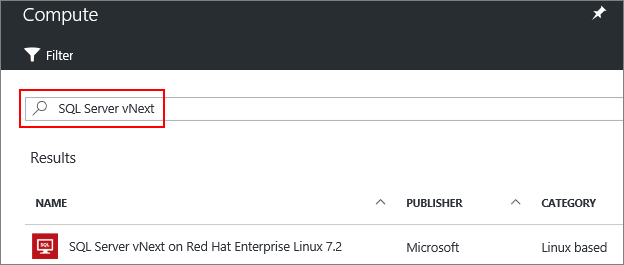By: Last Updated: 2017-03-13 Related Tips: > Problem Microsoft released an update for SQL Server on Linux from CTP 1 to CTP1.1. The upgrade will change the version from 14.0.1.246 to 14.0.100.187. I described the i in my last tip and in this tip I will let you know how to upgrade to CTP 1.1 for SQL Server vNext on Linux. Solution Microsoft released its first public preview for SQL Server on Linux on the 16th of November 2016.
Recently they have released an update of SQL Server vNext and which is now CTP1.1. You can read the of SQL Server vNext on Linux to get more details. The SQL Server engine version for this release is 14.0.100.187 where it was previously 14.0.1.246. You can also get a list of all the known issues of this version of SQL Server. Free autocad 2007 activation key download. There are also a few. Upgrading SQL Server vNext on Red Hat Linux Before going ahead, you need to have a Linux box running with which we will upgrade to CTP 1.1.
As Microsoft’s reference Linux platform for SQL Server, Red Hat ® Enterprise Linux ® extends the enterprise database and analytics capabilities of SQL Server with enterprise-grade performance, security, reliability, and management. Learn more about this integrated solution and special offers in this partner solution brief.

I followed the step by step method of Microsoft's online documentation to understand this upgrade. Now let's start the upgrade from SQL Server vNext CTP 1 to CTP 1.1. Step 1 First, I would recommend running full backups for of all your user and system databases to keep a copy in case anything goes wrong with the upgrade and we need to restore the databases. As SQL Server vNext is in CTP phase, I assume you do not have anything critical running on this version, so you can skip this step if you want. Step 2 Now connect to the Linux server. I connected to the Linux server using the PuTTY application as shown in the below picture. Post a comment or let the author know this tip helped.
Red Hat Sql Server
All comments are reviewed, so stay on subject or we may delete your comment. Note: your email address is not published. Required fields are marked with an asterisk (*). *Name *Email Email me updates *** NOTE *** - If you want to include code from SQL Server Management Studio (SSMS) in your post, please copy the code from SSMS and paste the code into a text editor like NotePad before copying the code below to remove the SSMS formatting. Signup for our newsletter I agree by submitting my data to receive communications, account updates and/or special offers about SQL Server from MSSQLTips and/or its Sponsors. I have read the and understand I may unsubscribe at any time.